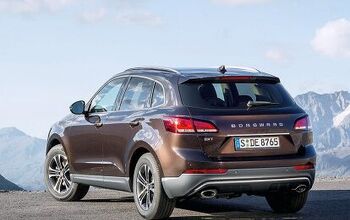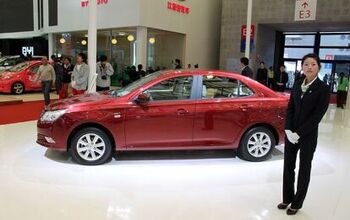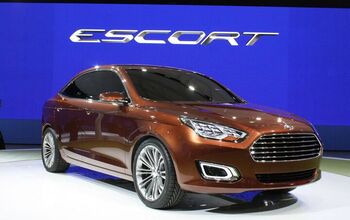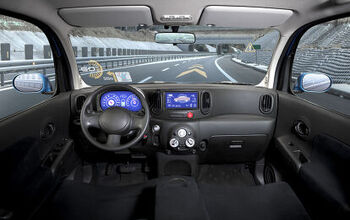Chinese Auto Market: Inbound Rebound?

With China serving as the flashpoint of the coronavirus outbreak that brought the world down a peg or two, industry and financial analysts have been watching that market like a hawk. The country went into this crisis before any other, which may prove useful for predicting the general path of global recovery efforts.
Unfortunately, specious reports about the number of infected citizens inside that nation have cast a double-quilted blanket of doubt over its official statistics. We don’t actually know if the Chinese government has effectively wrangled the illness or is just hoping to win an international public relations battle. Fortunately, infection rates and death tolls aren’t the only metrics we have to rely on.
According to the China Passenger Car Association, auto sales plummeted by as much as 96 percent since COVID-19 began its relentless spread. This came after months of negative sales growth, leaving the Chinese market in a truly unenviable situation once mandatory quarantines were enacted. Now, circumstances have changed. Showrooms are reopening and many factories have resumed operations, only this time they’re the ones that have to worry about supply chain issues.
Back when this seemed like an issue that would disproportionately affect China, many grew fearful that parts suppliers in that country would be unable to support automakers around the world. It didn’t take long before the auto industry started reporting breakdowns in parts supply. But the virus quickly spread beyond China’s borders, forcing other regions to similarly idle industry and direct people to stay indoors.
Fast forward a couple of months and China now finds itself trying to restart its economy with no one to ship parts to. Manufacturers the world over are temporarily closed and projecting sizable declines in production output ( unless its for medical ventilators) for the reminder of this year. With about 25 percent of all Chinese auto parts also requiring imported components, it’s not an ideal situation.
Headway is still being made, however. While the planet will probably take all future Chinese statistics with a grain of salt, the China Passenger Car Association hasn’t exactly sugarcoated the situation on the ground. Still, it’s being pretty optimistic about the future. The group estimates that domestic auto sales will normalize (reaching last year’s weekly averages) by the end of April. It was calculating weekly sales losses (vs 2019) of around 50 percent at the start of March and a practically motionless market just a month earlier. How can it be so confident now?
Well, lockdowns are easing across the nation — even in COVID-19’s origin point of Wuhan. According to Bloomberg, this has resulted in heaps of traffic for freshly reopened dealerships. “I was pretty shocked,” Zhang Jiaqi, a sales representative at an Audi AG dealer in Wuhan, told the outlet. “It’s like a boom after a two-month dormancy. I thought sales would be frozen.”
From Bloomberg:
The revival offers a sliver of hope for global carmakers from Audi parent Volkswagen AG to General Motors Co. and Toyota Motor Corp., whose sales are slumping in other regions of the world as the virus spreads. A recovery in China would suggest that consumers are willing to again spend on big-ticket items soon after emerging from isolation and lockdowns.
Some consumers in Wuhan are now even more willing to buy a car than before the virus crisis, as they see personal vehicles as safer than public transport, said Pan Fei, a marketing director at the Wuchang Audi shop. Demand at the store is now skewed toward smaller vehicles such as the A3, suggesting some families are buying second vehicles.
The outlet stopped short of citing anecdotal evidence as proof of an economic recovery. However, the Chinese government has also has launched various stimulus programs to encourage auto sales. While Bloomberg failed to elaborate on those, it seemed to believe they hold some promise. We’ve learned much of the country’s $572-billion stimulus plan is aimed at supporting larger businesses hurt by the economic slowdown. China likewise plans on launching countless infrastructure initiatives to keep the industrial sector busy while no one is importing goods. It’s just not interested in heavily incentivized auto purchases — at least not yet.
While local initiatives exist to encourage car buying (mostly small subsides and relaxed plate restrictions), the Chinese Communist Party seems keen on distancing itself from the practice during the pandemic. Nationwide stimulus programs have helped grow China’s economy immensely and spurred is take rate of EVs. However, this also left the nation with a lot of debt; auto customers tucked tail and ran the instant tax subsidies started being withdrawn. That may encourage the country’s leadership to ignore it as a potential recovery tactic, as it poses genuine long-term risks.
It’s probably too soon to predict China’s rebound with any real accuracy. Improvements from February are noteworthy, but the 25,000 weekly deliveries we’re now seeing from the China Passenger Car Association are only impressive within that context. The market was effectively dead at the time. Furthermore, China’s aggressive push back into industrial activity could risk a second outbreak of the virus — resulting in a longer recovery phase. Recessions are also looming across the globe and it can be argued that China entered into a period of economic downturn at least a year before the pandemic. That will also play an important factor, especially with so many other countries having to dig themselves out of similar financial craters as things return to whatever passes for normal in 2020.
[Image: Destinyweddingstudio/Shutterstock]

A staunch consumer advocate tracking industry trends and regulation. Before joining TTAC, Matt spent a decade working for marketing and research firms based in NYC. Clients included several of the world’s largest automakers, global tire brands, and aftermarket part suppliers. Dissatisfied with the corporate world and resentful of having to wear suits everyday, he pivoted to writing about cars. Since then, that man has become an ardent supporter of the right-to-repair movement, been interviewed on the auto industry by national radio broadcasts, driven more rental cars than anyone ever should, participated in amateur rallying events, and received the requisite minimum training as sanctioned by the SCCA. Handy with a wrench, Matt grew up surrounded by Detroit auto workers and managed to get a pizza delivery job before he was legally eligible. He later found himself driving box trucks through Manhattan, guaranteeing future sympathy for actual truckers. He continues to conduct research pertaining to the automotive sector as an independent contractor and has since moved back to his native Michigan, closer to where the cars are born. A contrarian, Matt claims to prefer understeer — stating that front and all-wheel drive vehicles cater best to his driving style.
More by Matt Posky
Latest Car Reviews
Read moreLatest Product Reviews
Read moreRecent Comments
- VoGhost Interesting comments. Back in reality, AV is already here, and the experience to date has been that AV is far safer than most drivers. But I guess your "news" didn't tell you that, for some reason.
- Doc423 Come try to take it, Pal. Environmental Whacko.
- 28-Cars-Later Mazda despite attractive styling has resale issues - 'Yota is always the answer.
- 28-Cars-Later Try again.
- Doc423 It's a flat turn, not banked, which makes it more difficult to negotiate, especially if you're travelling a little too fast.


































Comments
Join the conversation
There is no doubt in my mind that the Chinese government will not hesitate to get its economy rolling again, regardless of whether it's safe to do that. And of course good luck with them informing the world of the deaths which result. This is where global leadership has to put its foot down.